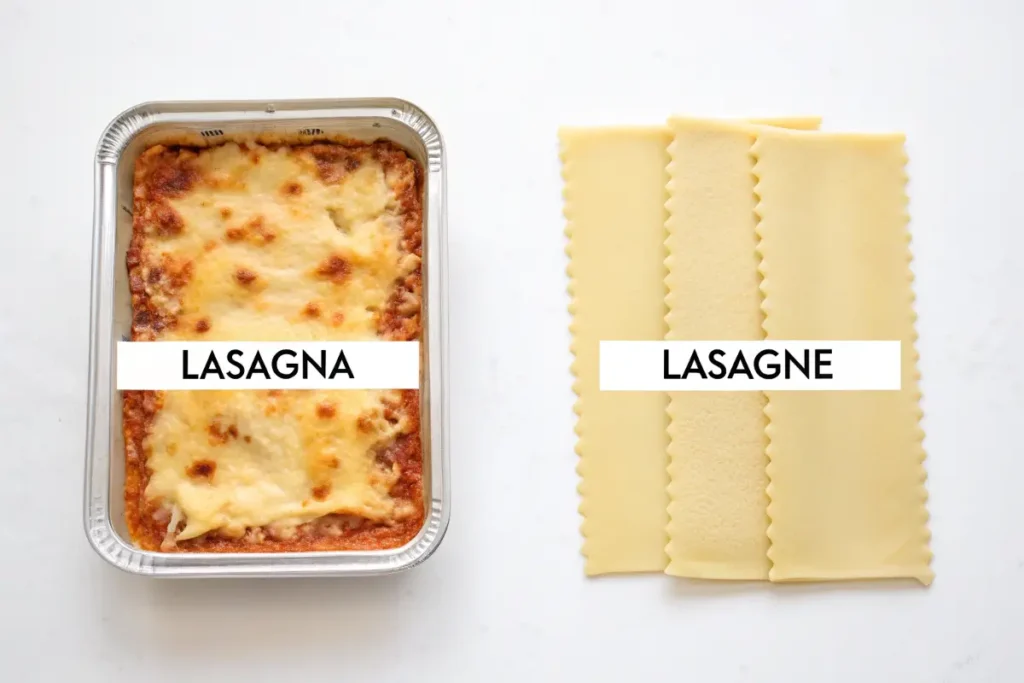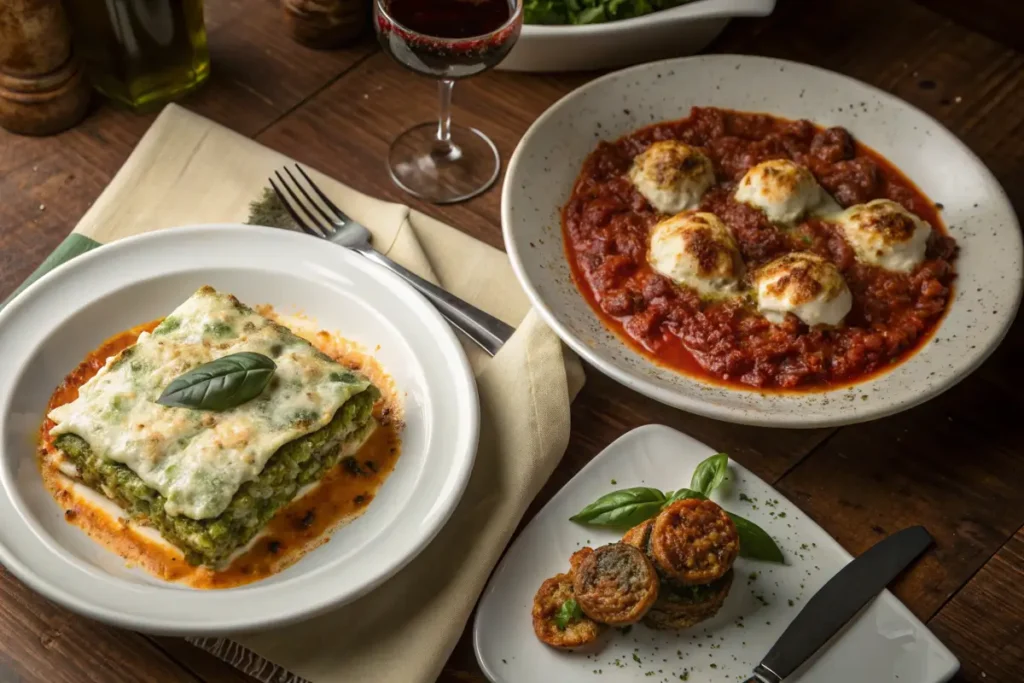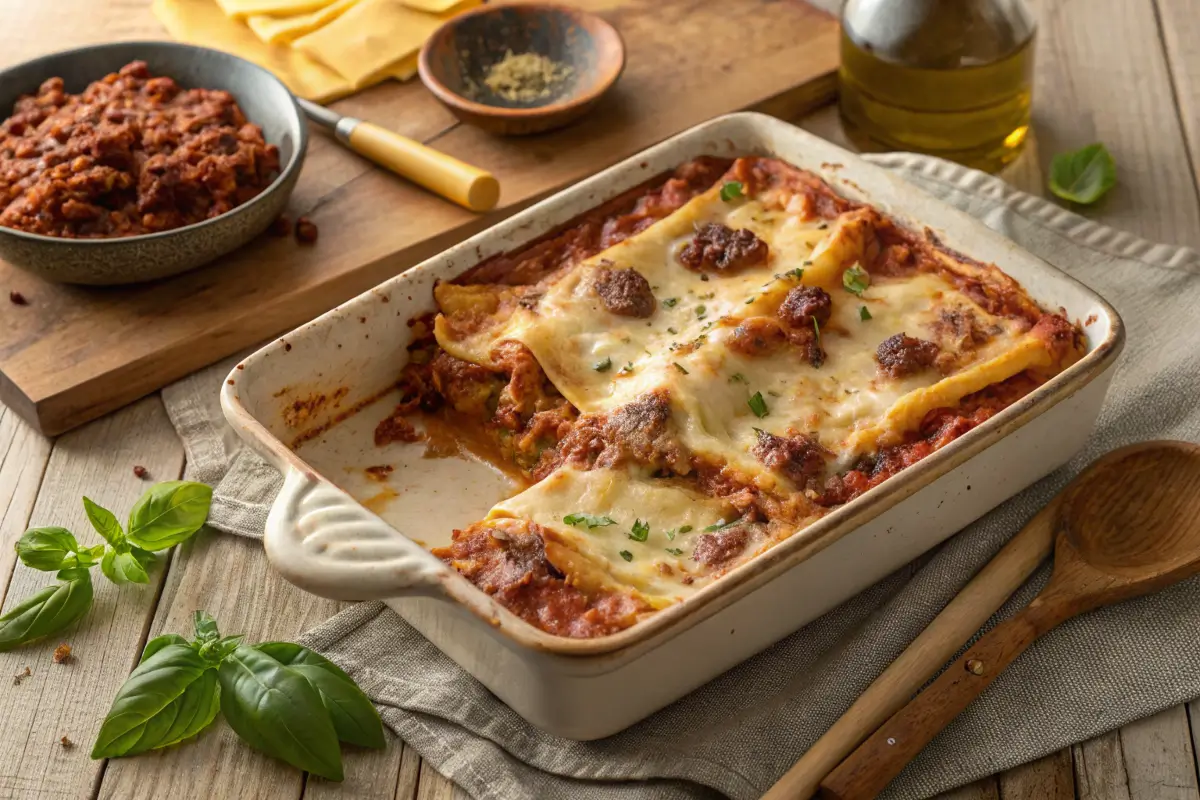What is the Difference Between Lasagna and Lasagne? A Comprehensive Guide
Lasagna and lasagne – they sound almost identical, but these two words spark endless debates among food lovers. Are they merely linguistic quirks, or do they hint at something deeper? This article delves into the distinctions between lasagna and lasagne, examining their etymology, culinary interpretations, and cultural significance. By the end, you’ll be equipped to appreciate the nuances of these layered pasta dishes and know exactly how they differ.
Part 1: Understanding the Terminology
Defining Lasagna and Lasagne
The first step in uncovering the difference between lasagna and lasagne is to understand what these terms mean. While both refer to a beloved pasta dish, their usage hinges on a subtle linguistic twist.
Etymology and Origins
The roots of the term trace back to the Latin word “lasanum,” meaning cooking pot. Interestingly, the Greeks used a similar term, “lasanon,” to describe a pot used for cooking. Over time, Italians adopted the word to represent both the dish and the pasta sheets themselves.
The confusion between lasagna and lasagne stems from language. In Italian, lasagna (singular) refers to a single pasta sheet, while lasagne (plural) represents multiple sheets, typically stacked into the baked dish we all love.
Singular vs. Plural Usage

In English-speaking countries, the terms are often used interchangeably. However, lasagna has become more common in American English, while lasagne is favored in British English. Regardless of the spelling, both refer to the hearty dish layered with pasta, sauce, cheese, and sometimes vegetables or meat.
This linguistic quirk is a testament to how language evolves and adapts to cultural contexts. It’s not about one being right or wrong – it’s all about how the dish is perceived and named locally.
Part 2: Historical Background
The Evolution of Lasagna
Lasagna’s journey through time is as rich as its flavors, blending culinary innovation with cultural adaptation. From ancient origins to global prominence, this layered pasta dish has evolved into a symbol of comfort food that transcends borders.
Ancient Roots in Greek and Roman Cuisine
The story of lasagna begins with the Greeks, who prepared a dish called “laganon.” Unlike today’s baked masterpiece, laganon was a flat pasta dough cut into strips and cooked with herbs. When the Romans embraced this concept, they enhanced it by layering dough with fillings like meats and cheeses, a precursor to the lasagna we know today.
Interestingly, the Romans referred to the cooking vessel used for the dish as “lasanum,” linking the name to its preparation method. These early variations were far simpler than modern recipes but laid the groundwork for this enduring classic.
Development in Italy During the Middle Ages
Fast forward to medieval Italy, where regional culinary traditions began to flourish.. In this era, lasagna recipes gained complexity with the addition of ingredients like ricotta, béchamel, and more sophisticated sauces. Each Italian region added its twist, with Bologna, for instance, creating the iconic lasagna alla Bolognese featuring layers of ragù and Parmigiano-Reggiano.
This period also saw lasagna transitioning from a dish of the elite to a staple of the common kitchen, solidifying its place in Italian gastronomy.
Introduction to English-Speaking Countries
When Italian immigrants brought lasagna to the United States and the United Kingdom in the 19th and 20th centuries, it quickly gained popularity. However, cultural and linguistic adaptations followed. Americans embraced the term lasagna, while the British retained the pluralized lasagne, reflecting their ties to Italian traditions.
Over time, lasagna became synonymous with family meals and celebrations, further embedding itself in global cuisine.
Part 3: Linguistic Differences
Regional Language Variations
The linguistic journey of lasagna and lasagne is as layered as the dish itself. Regional preferences in terminology reveal how this pasta delight has been embraced across cultures.
American English Preferences
In the United States, lasagna is the dominant spelling. This choice aligns with American English’s tendency to simplify and streamline foreign words. For many, lasagna is synonymous with the dish, and the singular form avoids confusion when discussing this culinary favorite.
Additionally, American adaptations of the dish often feature hearty ingredients like extra cheese or ground beef, further distinguishing it from traditional Italian recipes.
British English Preferences
Across the pond, lasagne is the preferred spelling, staying truer to its Italian roots. The British usage reflects a closer linguistic and culinary connection to continental Europe. Restaurants in the UK often highlight the pluralized form on menus, showcasing an appreciation for authentic Italian nomenclature.
Italian Usage and Dialects
In Italy, the distinction is crystal clear. Lasagna refers to a single sheet of pasta, while lasagne denotes the dish itself. Regional dialects and traditions may introduce slight variations in pronunciation, but the essence remains consistent.
Understanding these linguistic nuances enriches our appreciation for lasagna and lasagne as both a culinary and cultural phenomenon.
Part 4: Culinary Interpretations
Traditional Italian Recipes
The magic of lasagna lies in its ability to balance simplicity and complexity, offering a dish that feels both comforting and gourmet. Traditional Italian recipes capture the heart of this balance, with carefully selected ingredients and time-honored preparation methods.
Ingredients and Preparation Methods
Authentic lasagna begins with high-quality pasta sheets, often homemade, for that tender yet firm texture. The filling layers alternate between ragù, a slow-cooked meat sauce, and béchamel, a creamy white sauce that binds the dish. A generous sprinkling of grated Parmigiano-Reggiano or Pecorino Romano crowns each layer, adding a nutty, savory note.
Preparation is a labor of love. The ragù simmers for hours, melding tomatoes, garlic, onion, celery, and finely minced meat. Meanwhile, the béchamel is whisked to a silky consistency, ensuring each bite melts in your mouth. Assembling the dish involves layering the sauces, pasta, and cheese in a casserole dish before baking it to golden perfection.
Regional Variations Within Italy

Italy’s culinary diversity is mirrored in its lasagna recipes, with regional styles reflecting local ingredients and traditions.
Northern vs. Southern Styles
In Northern Italy, lasagna alla Bolognese reigns supreme. It features fresh egg pasta, typically green from spinach, and a rich meat-based ragù. Béchamel sauce is essential, lending a creamy contrast to the hearty filling.
Southern Italy, particularly Naples, offers lasagna di Carnevale, a celebratory version loaded with ricotta, mozzarella, tiny meatballs, and hard-boiled eggs. This style embraces bold flavors and an indulgent touch, highlighting the region’s love for robust ingredients.
These regional variations illustrate how lasagna adapts to the local palate, making it an iconic yet personal dish.
Part 5: Cultural Significance
Lasagna in Modern Cuisine
Lasagna has transcended its Italian roots to become a global phenomenon, cherished for its versatility and hearty appeal. Today, it’s a staple at family gatherings, holiday feasts, and casual dinners alike.
Global Popularity and Adaptations
Around the world, chefs and home cooks alike have reimagined lasagna to suit diverse tastes and dietary needs. In the United States, variations include vegetarian lasagnas brimming with spinach and ricotta, or even gluten-free versions crafted with zucchini or eggplant layers.
Meanwhile, in Asia, fusion interpretations incorporate flavors like curry or soy-based fillings, adding a unique twist to the classic dish. These adaptations celebrate the universality of lasagna, proving its ability to bridge cultural boundaries.
Symbolism in Italian Culture
In Italy, lasagna is more than just a meal – it’s a symbol of love and togetherness. The dish is often reserved for special occasions, embodying the care and effort that go into preparing it. Families pass down recipes through generations, each adding their own personal flair to the classic.
Whether it’s a centerpiece at a holiday table or a comforting weeknight dinner, lasagna captures the essence of Italian hospitality and culinary artistry.
Part 6: Common Misconceptions
Clarifying Myths About Lasagna and Lasagne
Despite its popularity, lasagna (or lasagne) is often shrouded in myths and misconceptions that lead to unnecessary confusion. Let’s clear the air by addressing some of these misunderstandings.
Misunderstandings in Terminology
One of the most persistent myths is that lasagna and lasagne represent entirely different dishes. However, as we’ve established, the difference lies in language, not the recipe itself. Lasagna is singular and commonly used in American English, while lasagne is plural and favored in British English and Italian.
Another misconception is that the terms imply different cooking styles or ingredients. This is false – both terms refer to the same layered pasta dish, with no inherent variations in their preparation.
Variations in Recipes and Ingredients
People often assume there’s a “correct” way to make lasagna, leading to debates over ingredients. For instance, some purists argue that authentic lasagna must include béchamel sauce, while others insist ricotta is acceptable. The truth is, lasagna has always been a flexible dish, adapting to regional and personal preferences.
Additionally, modern takes on the dish, such as vegetarian or vegan lasagnas, sometimes draw criticism for straying from tradition. However, these variations reflect the dish’s adaptability and enduring appeal, proving that lasagna can evolve while still honoring its roots.
Part 7: Frequently Asked Questions (FAQs)
FAQs About Lasagna and Lasagne
Is there a difference between lasagna and lasagne?
Yes, but it’s purely linguistic. Lasagna is singular, referring to one sheet of pasta, and is commonly used in American English. Lasagne is plural, describing the dish as a whole or multiple pasta sheets, and is used in British English and Italian.
Why do Americans spell it ‘lasagna’ and the British ‘lasagne’?
This difference stems from how Italian words are adopted in English. Americans simplified the term to lasagna, aligning with their preference for streamlined language. The British retained the Italian plural form lasagne, reflecting a closer tie to Italian linguistic traditions.
What are the traditional ingredients in an authentic Italian lasagna?
Authentic Italian lasagna features pasta sheets, ragù (a slow-cooked meat sauce), béchamel sauce, and grated cheese like Parmigiano-Reggiano. Some regional recipes may incorporate ricotta, mozzarella, or spinach pasta sheets.
How has lasagna evolved in different cultures?
Globally, lasagna has been reimagined with unique twists. In the U.S., it’s often made with extra cheese and meat. In vegetarian versions, ingredients like spinach, zucchini, or eggplant replace meat. Fusion styles incorporate local flavors, such as curry spices in Asia or plant-based proteins for vegans.
Can lasagna be made without meat?
Absolutely! Vegetarian lasagna is a popular option, featuring layers of vegetables, ricotta, and marinara sauce. Vegan versions use plant-based cheeses and protein alternatives like lentils or tofu. These variations prove that lasagna is versatile and inclusive.
What are common mistakes when making lasagna at home?
One frequent error is not pre-cooking pasta sheets, leading to undercooked layers. Others include overloading the dish with sauce, which makes it watery, or neglecting to let it rest after baking, causing messy servings. Proper preparation and patience are key to a perfect lasagna.
Part 8: Conclusion
Summarizing the Differences and Similarities
As we peel back the layers of lasagna and lasagne, it’s clear that these terms, while seemingly different, share a singular heart – a celebration of flavors, tradition, and adaptability. Let’s recap their distinctions and what unites them.
Linguistic Nuances
At its core, the difference between lasagna and lasagne lies in language. Lasagna, the singular form, dominates American English, simplifying its Italian origins. Conversely, lasagne, the plural form, remains faithful to the Italian language and finds favor in British English. Despite these linguistic variations, both terms universally represent the same delicious layered pasta dish.
Cultural and Culinary Perspectives
Culturally, lasagna transcends borders. In Italy, it is a symbol of family, tradition, and special occasions. Globally, it has been embraced and reimagined, from vegetarian adaptations to fusion dishes that incorporate local flavors. Regardless of the recipe or spelling, lasagna embodies comfort and creativity, bringing people together around the table.
In the end, whether you call it lasagna or lasagne, this dish reminds us of the beauty in diversity and the joy of shared meals. The differences may be nuanced, but the love for this culinary masterpiece is universal.

